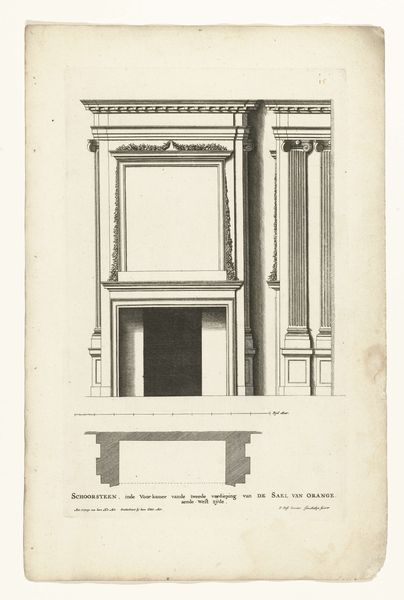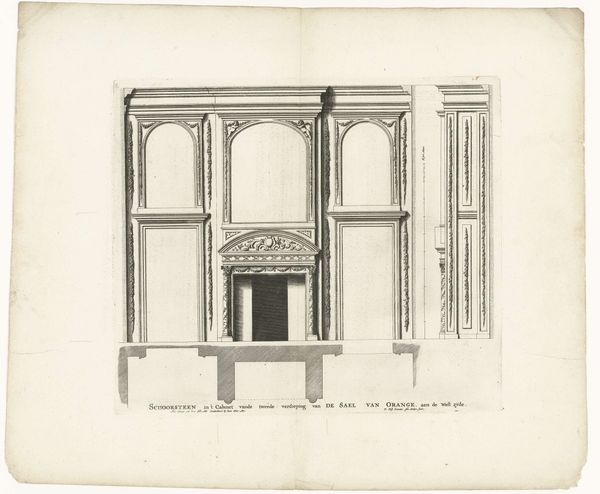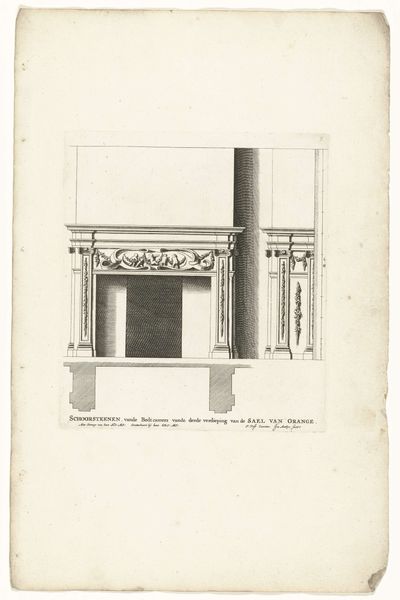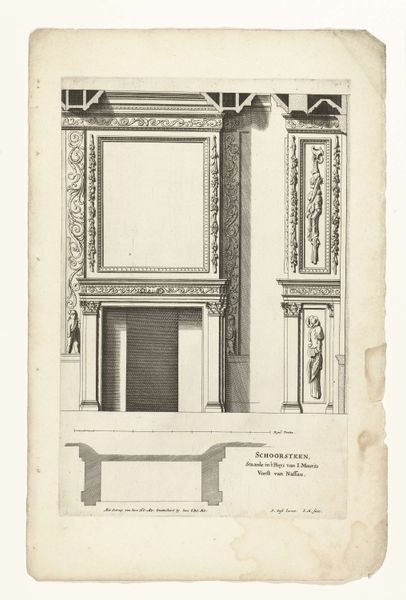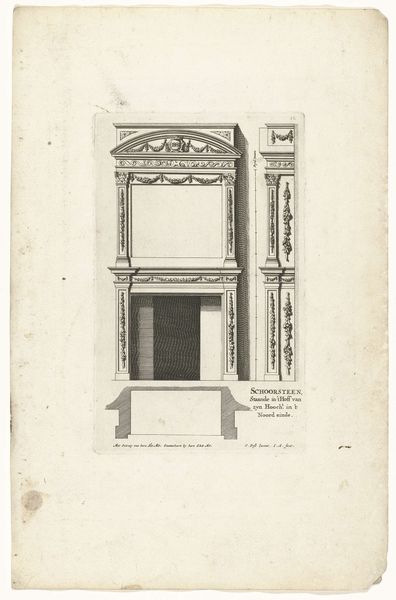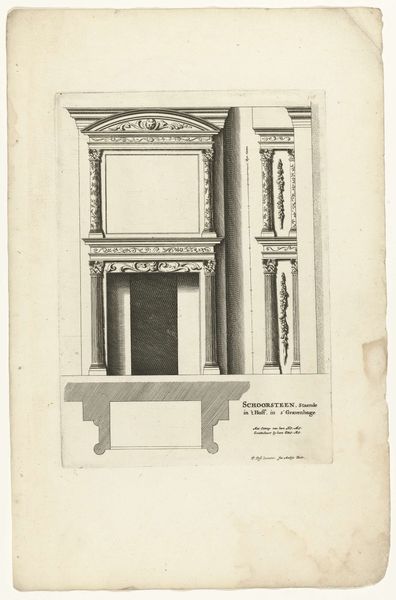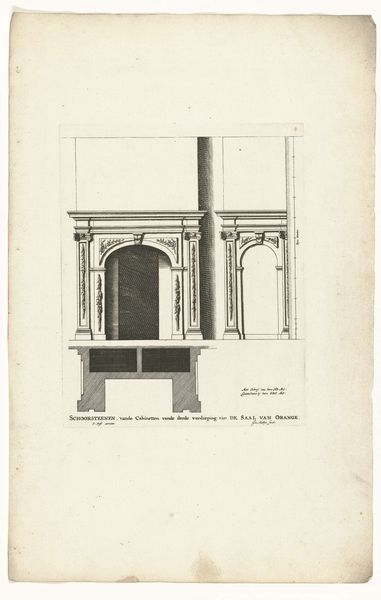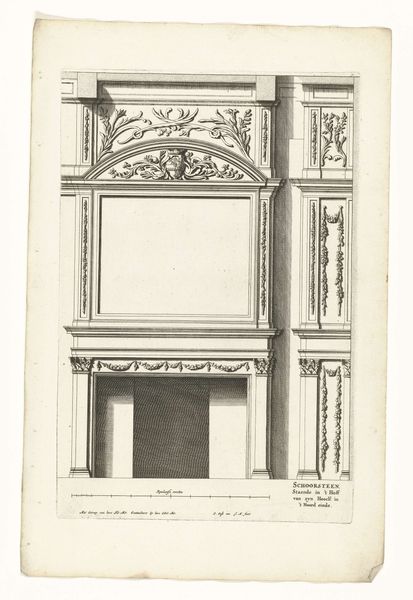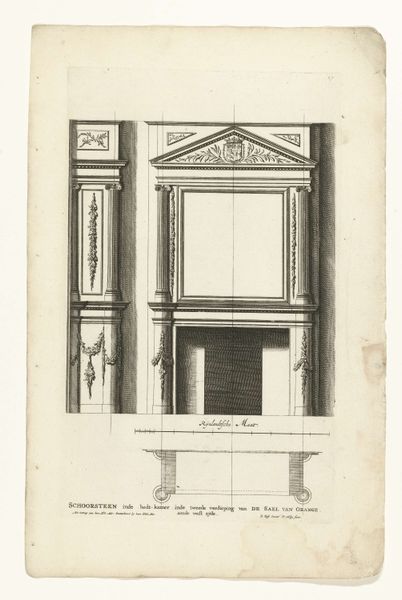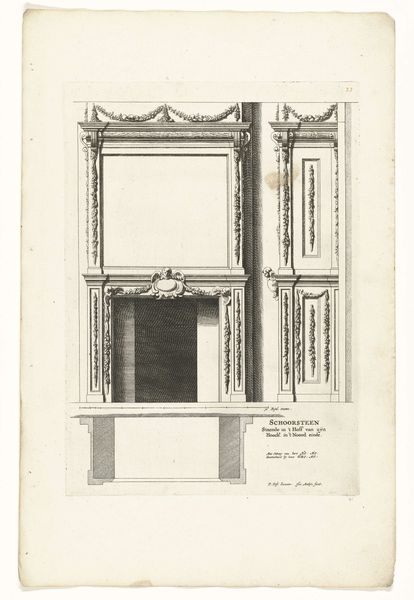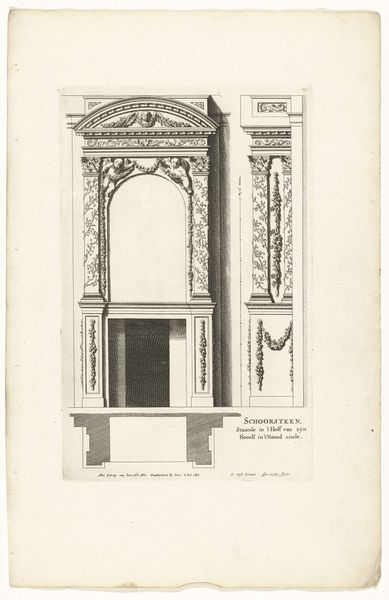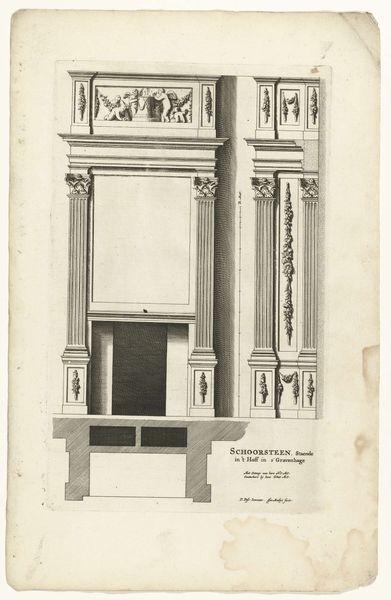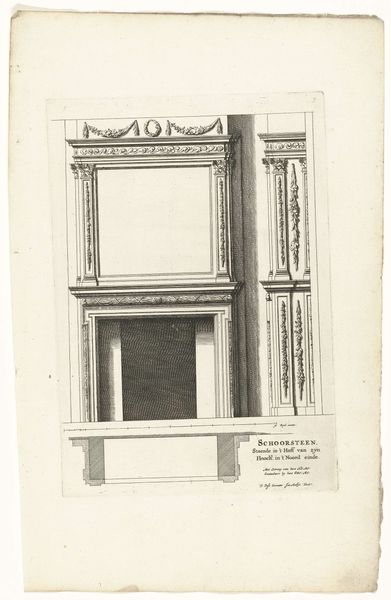
drawing, print, engraving, architecture
#
drawing
#
baroque
# print
#
geometric
#
history-painting
#
engraving
#
architecture
Dimensions: height 250 mm, width 289 mm
Copyright: Rijks Museum: Open Domain
Editor: Here we have “Onderboezem in Paleis Huis ten Bosch,” an engraving dating back to 1664, crafted by Jan Matthysz. It presents this starkly detailed vision of architecture. The stark linearity really throws me. It feels almost cold. What catches your eye about this piece? Curator: It's interesting you say cold; I find a quiet elegance in its geometry. Think of the cultural context: The Baroque loved ornamentation, and this is certainly present, yet there is restraint and an embrace of space within it. This isn't merely documenting a fireplace; it’s suggesting something grander, perhaps the rational mind ordering nature. What about those decorative flourishes - do they not invite the gaze, or maybe hint at something beyond the mere practical? Editor: I see what you mean. I guess the patterns are visually interesting, but it still feels...controlled, almost to a fault. Were these engravings commonly viewed as artworks themselves, or were they more like architectural blueprints for the period? Curator: Ah, a brilliant question! They served both purposes, I believe. An architect or patron could view this engraving to gauge style and plan future builds, yes, but simultaneously it existed as an object of admiration in itself. Jan Matthysz., through engraving, wasn't only representing architecture, he was interpreting it. And isn't interpretation at the heart of all art? Editor: That’s a great point. I hadn’t considered the act of engraving itself as interpretive. I’m seeing it differently now, less a blueprint, more of a statement about form. Curator: Exactly. Now, consider where your own perspective on linearity meets with Jan Matthysz's intentions. Could this interplay transform, not just your reading of it, but his? Editor: I suppose it allows me to appreciate the balance. It really emphasizes intention, the act of creating and designing, rather than simply the aesthetic. Thanks for this!
Comments
No comments
Be the first to comment and join the conversation on the ultimate creative platform.
